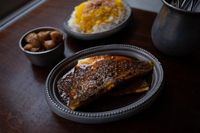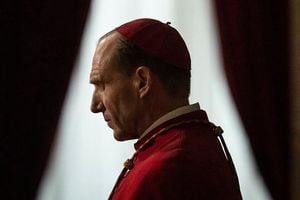Each spring, millions awaken from winter's slumber to celebrate Nowruz, the Persian New Year. With roots tracing back over 3,000 years to ancient Iranian traditions, Nowruz translates to "new day" and marks a festival of renewal and hope coinciding with the vernal equinox on March 20. This year, the celebrations commence at exactly 5:01 PM Eastern Time.
At the heart of any Nowruz celebration is the haft-seen table, an intricate display that comprises at least seven items starting with the Persian letter "S". Each item symbolizes a different aspect of life and renewal: sabzeh (sprouted wheat), samanu (sweet wheat pudding), senjed (dried oleaster fruit), seer (garlic), seeb (apple), somaq (sumac), and serkeh (vinegar). Additional meaningful items may include a mirror, a goldfish, and painted eggs, underscoring themes of self-reflection, life, and fertility.
For many families, Nowruz is a chance to reset and start anew, which is reflected in an essential tradition known as "khooneh takooni," or house shaking. This 13-day spring cleaning ritual serves to declutter and refresh the home, preparing it to receive guests and symbolize renewal as family and friends gather to celebrate the new year.
The cleaning process is segmented into distinct phases. During days 1-5, focus on outdoor areas: cleaning patios, fences, and windows. A simple homemade window cleaning solution involves two cups of water and 10-20 drops of essential oil for freshness. This phase gets everyone ready to enjoy the milder weather ahead.
Days 6-10 shift indoors, where families move furniture and tackle room-by-room cleaning. Dr. Azadeh Weber, a clinical psychologist, emphasizes that the physical act of cleaning transcends chores. "This Nowruz tradition goes beyond the physical act of cleaning and carries emotional, psychological, and spiritual importance," Weber remarks. "A clean home reflects warmth and hospitality."
Finally, in the last phase from days 11-13, a more granular approach is taken, sorting items in cabinets and pantries. This is the time for deep organization and clears out any congested areas, preparing for a fresh start as families look forward to the new year.
A significant cultural aspect of Nowruz is the traditional menu, which features dishes symbolizing prosperity and health. A Nowruz feast might begin with kookoo sabzi, a herby frittata-like appetizer, followed by sabzi polo ba mahi (rice with herbs and fried fish). These dishes, alongside treats like baklava and nan-e nokhodchi, nurture connections among friends and family around the haft-seen table.
As families gather to celebrate, it's customary to give eidi, or New Year gifts, such as crisp banknotes to children, symbolizing blessings for the year ahead. Additionally, many recite poems by the esteemed Persian poet Hafez, seeking guidance for their journey into the new year.
Festivities climax on "sizdeh be dar," the 13th day of the Iranian New Year, when Persians enjoy picnics in national parks or suitable outdoor areas. This tradition is about rejoicing in nature, packing delicious meals, and, more recently, celebrating with a backyard barbecue.
In London, several eateries like Berenjak and Naroon are preparing special menus to honor Nowruz, offering a taste of these traditional dishes for diners. Berenjak's take on ghalieh mahi features a bream stew, while Naroon serves a set menu celebrating the essential elements of Nowruz.
As the festivities begin, the spirit of Nowruz prevails through music, joy, and dance, capturing the essence of Persian culture. This year, as families and friends gather, they embody the centuries-old significance of renewal and optimism that defines Nowruz.






